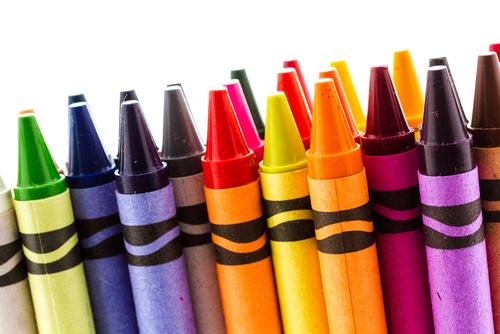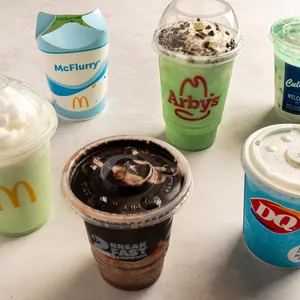Coloring Inside the Lines: A Look at the History of a Crayon

Colorful, portable, and all around fantastic, the crayon has evolved a lot over the years and has definitely made an impact on society. The crayon, like most objects, has had a significant history and, though it is often overlooked or taken for granted, there is much more to it than its color.
The crayon was created about a century ago in Europe by inventors Binney & Smith. The first crayons were made from charcoal and oil, but Binney and Smith developed the first non-toxic wax crayon, which was sold for about a nickel per box. Today, crayons are made from paraffin wax and pigments. Workers pipe paraffin wax, a translucent, waxy, substance in liquid form into a heated tub. Then, the paraffin must be fully blended with colored pigments to create a liquid mixture, which is pumped into molds of a desired crayon shape. The molds are cooled by circulating water, allowing the crayons to be taken out of their molds. They are, then, inspected for breaks or chips; the rejected crayons are returned to this “cycle”, while the accepted crayons will proceed to be wrapped in paper labels and then packaged to be sent to a manufacturer (i.e. Crayola, Cra-z Art, etc.).
The world’s leading crayon brand, Crayola, was founded in 1885 and was the first crayon company. Its name came from 2 French words: craie (chalk), and oily (oil), hence the name, Crayola. Other popular brands, such as Cra-z Art (2008) and Rose Art (1923), were founded later, and are not as popular or well known as Crayola. The very first modern crayons only came in 8 colors: black, blue, brown, green, orange, purple, red and yellow. Today, there are over 120 colors of crayons, ranging from Asparagus green, to Shocking Pink.
The use of a crayon does not stop at just coloring. As suggested by students at Mayfield Middle School, crayons can also be used to make lipstick, create new colors of paint, mix together colors, make crayon candles, and even turn it into Play-Dough. According to a poll, student’s most favorite color was blue, and, when asked if they prefer crayons or markers, the majority said that preferred crayons for reasons such as: you can sharpen them, they will not bleed through paper, and they do not get used up as fast. The most popular brand of crayon turned out to be Crayola.
The crayon has gone along way since 1903, and has flourished recently with a number of new brands and colors. The crayon is not just limited to coloring, as shown. What will you do with your crayons?











